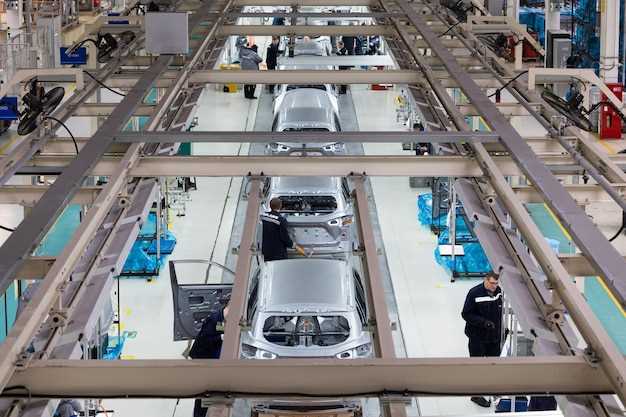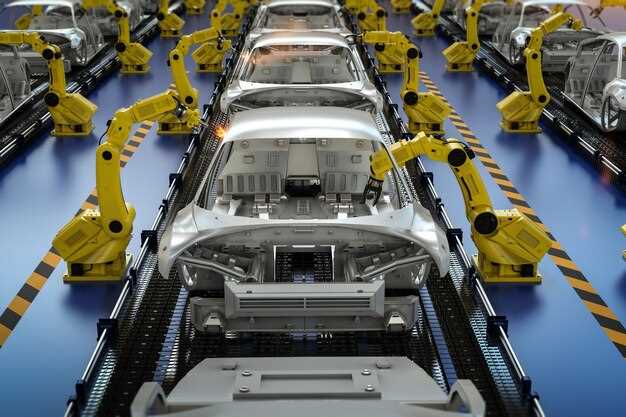
The automotive industry is undergoing a significant transformation as manufacturers increasingly prioritize sustainability in their processes. With the urgent need to address climate change and environmental degradation, factories are implementing eco-friendly practices to minimize their carbon footprints. This shift not only meets regulatory requirements but also aligns with the growing consumer demand for greener vehicles.
Manufacturers are investing in state-of-the-art technologies to make their production lines more efficient and less wasteful. Utilizing renewable energy sources, such as solar and wind power, is a common strategy among these factories. Additionally, many companies are re-evaluating their supply chains to ensure that materials are sourced sustainably, further enhancing their overall eco-friendly initiatives.
In parallel with these operational changes, the design and engineering of vehicles are also evolving. Automakers are incorporating recycled and sustainable materials into their vehicles, which not only reduces waste but also promotes a circular economy. As sustainability becomes a crucial component of automotive manufacturing, the industry is set to redefine its relationship with the environment for future generations.
Implementing Energy-Efficient Technologies in Car Production
In the quest for sustainability, automotive manufacturers are increasingly adopting eco-friendly and green technologies to enhance energy efficiency in production processes. These innovations not only reduce carbon footprints but also lower operational costs.
One significant approach is the integration of advanced automation and robotics, which optimize manufacturing lines. By utilizing energy-efficient robots, manufacturers can decrease energy consumption while maintaining precision and speed in production. This shift leads to less waste and a more streamlined process.
In addition, the deployment of renewable energy sources, such as solar and wind, is gaining traction in automotive manufacturing plants. Facilities are being equipped with solar panels or wind turbines to power operations sustainably. This transition helps in offsetting the reliance on fossil fuels and aligns with global green initiatives.
Implementing energy-efficient lighting systems, such as LED technology, further contributes to reducing energy usage. These systems not only consume less power but also have a longer lifespan, allowing manufacturers to minimize maintenance costs and environmental impact.
Moreover, manufacturers are innovating by using energy management systems (EMS) that monitor and control energy usage in real time. These systems help identify inefficiencies and enable companies to make data-driven decisions, ultimately leading to enhanced energy conservation measures.
Lastly, the adoption of life cycle assessment (LCA) tools plays a critical role in evaluating the environmental impact of manufacturing processes. By analyzing energy consumption throughout the production cycle, manufacturers can implement strategies that enhance sustainability and reduce harmful emissions.
In conclusion, the implementation of energy-efficient technologies in car production is vital for achieving a sustainable automotive industry. By focusing on eco-friendly practices, manufacturers can contribute to a greener future while also enhancing their competitive edge in the market.
Utilizing Recycled Materials in Vehicle Components

The automotive industry is increasingly focusing on sustainability efforts to reduce its environmental footprint, and one significant strategy involves utilizing recycled materials in vehicle components. Factories are adapting their manufacturing processes to incorporate recycled plastics, metals, and even rubber, thus diverting waste from landfills and lowering the demand for virgin materials.
Recycled plastics, for example, are now being used in parts such as dashboards, bumpers, and interior panels. These materials not only decrease production costs but also enhance the green credentials of vehicles. Manufacturers are investing in technologies that allow them to process and reuse these materials efficiently, ensuring that quality standards are maintained while promoting circular economy principles.
Metals, particularly aluminum and steel, are also frequently recycled in automotive production. The recycling of these metals is energy-efficient compared to extracting raw materials, resulting in lower greenhouse gas emissions. Factories are increasingly sourcing recycled metals to fabricate engine components, frames, and other critical structures, contributing to the overall sustainability profile of vehicles.
The shift towards using recycled materials extends beyond environmental benefits; it also resonates with consumers who are more environmentally conscious. As vehicle manufacturers adopt greener practices, they enhance their brand reputation and attract a market segment that prioritizes sustainability. This ongoing transition reflects a growing recognition that the future of automotive manufacturing hinges on innovative approaches to resource management and waste reduction.
By integrating recycled materials into vehicle design and production, the automotive sector can reduce its ecological impact while meeting consumer demand for sustainable products. As factories evolve to embrace these practices, they pave the way for a more sustainable and responsible automotive industry.
Creating a Circular Economy in the Automotive Supply Chain

The concept of a circular economy is becoming increasingly vital in the automotive sector as manufacturers seek to establish sustainable practices. This approach emphasizes the reuse, recycling, and repurposing of materials, reducing waste and minimizing environmental impacts.
One of the key strategies in creating a circular economy in the automotive supply chain is designing vehicles with eco-friendly materials. Utilizing biodegradable plastics and sustainably sourced metals not only reduces the carbon footprint during production but also ensures that end-of-life vehicles can be recycled with greater efficiency.
Additionally, collaboration among supply chain partners plays a crucial role in this transition. By engaging suppliers that prioritize green practices, automotive manufacturers can ensure that every stage of production aligns with sustainability goals. This includes selecting partners who utilize renewable energy sources and practice waste reduction techniques.
The integration of technologies such as the Internet of Things (IoT) can also facilitate a circular economy. IoT enables manufacturers to track materials throughout the supply chain, ensuring they are used efficiently and can be reclaimed at the end of their lifecycle. This data-driven approach supports a closed-loop system, where materials are continuously reused rather than discarded.
Moreover, consumer awareness and demand for sustainable products can drive automotive companies to adopt circular economy principles. By marketing the long-term benefits of green vehicles and eco-friendly practices, companies can build a loyal customer base that values sustainability, encouraging further innovation in the supply chain.
Transitioning to a circular economy is not just beneficial for the environment; it also provides economic opportunities. By reducing material costs and enhancing efficiency, automotive manufacturers can improve their bottom line while contributing to global sustainability efforts.
In conclusion, creating a circular economy in the automotive supply chain requires a multifaceted approach that includes eco-friendly materials, collaborative partnerships, advanced technology, and consumer engagement. This shift not only promotes environmental responsibility but also sets the foundation for a resilient and sustainable automotive industry.




